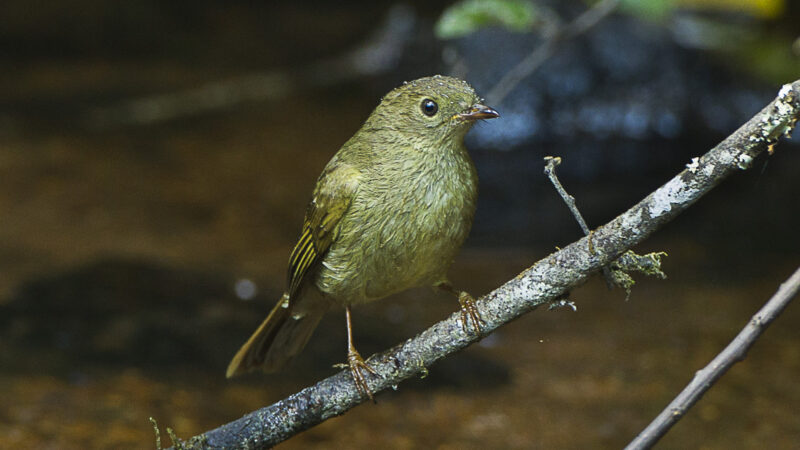
Original article “Using evolution in conservation: Genomic vulnerability of the Little Greenbul” posted by Jente Ottenburghs at Avian Hybrids.
Taking into account future climatic changes.
You are probably familiar with the words of Theodosius Dobzhansky: “Nothing in biology makes sense except in the light of evolution.” The statement has been applied to many different disciplines, including conservation biology. If we want to prevent species from going extinct, we need to understand how they evolve. This knowledge is especially relevant in the context of current climate change where species are forced to adapt, move or die. By studying how certain species coped with past climatic changes, we can gain insights into possible future responses and take appropriate conservation measures. A recent study in the journal Evolutionary Applications focused on the Little Greenbul (Andropadus virens) in Central Africa. How will this passerine deal with future environmental changes?
Genomic Vulnerability
The researchers tried to estimate the “genomic vulnerability” of the Little Greenbul. This concept refers to the mismatch between current and predicted genomic variation based on current relationships between genotypes and environmental variables. If this sounds like jibber jabber to you, let me walk you through the different steps. First, the researchers captured the genetic variation across populations of the Little Greenbul (using RADseq). Next, they correlated the uncovered genetic variants with environmental variables, such as temperature and precipitation. The resulting correlations give an indication which genotypes are associated with particular environmental conditions. For example, a genetic variant (or SNP) on chromosome 11 might correlate strongly with local rainfall, suggesting it is involved in local adaptation to wet or dry conditions. Finally, the researchers modelled future climatic changes (in 2080) and other disturbances, such as logging and mining, and correlated the current genomic variation with these future conditions. The degree of mismatch in genotype-environment correlations for the current and the future situation gives an indication of the genomic vulnerability of a species. If a correlation remains similar, there is no problem. But if a correlation weakens or disappears in the future, the Little Greenbul is in trouble.
Rapid Evolution Required
The analyses revealed that populations in coastal and central areas of Cameroon will require large changes in genomic variation, while populations in forest-savannah transitions are relatively safe. The situation is nicely illustrated in the map below where green areas correspond to low genomic vulnerability and red areas to high genomic vulnerability. The authors note that “in the most genomically vulnerable areas of Cameroon, they will need to evolve at a rate faster than they have done since the LGM [i.e. last glacial maximum] – a magnitude of change in 50 years likely beyond the limits of biological reality.” That is bad news for the Little Greenbul.

Future Distributions
This study nicely shows how we can use evolutionary information in conservation research. In particular, these results highlight that we should not only focus on the current distributions of endangered species, but also take into account future range shifts. Conservation often gives the impression of preserving a static situation, but the reality is that the world is constantly and rapidly changing. And we have to keep up.
References
Smith, T. B., Fuller, T. L., Zhen, Y., Zaunbrecher, V., Thomassen, H. A., Njabo, K., … & Harrigan, R. J. (2021). Genomic vulnerability and socio‐economic threats under climate change in an African rainforest bird. Evolutionary Applications, 14(5), 1239-1247.
Featured image: Little Greenbul (Andropadus virens) © Francesco Veronesi | Wikimedia Commons
